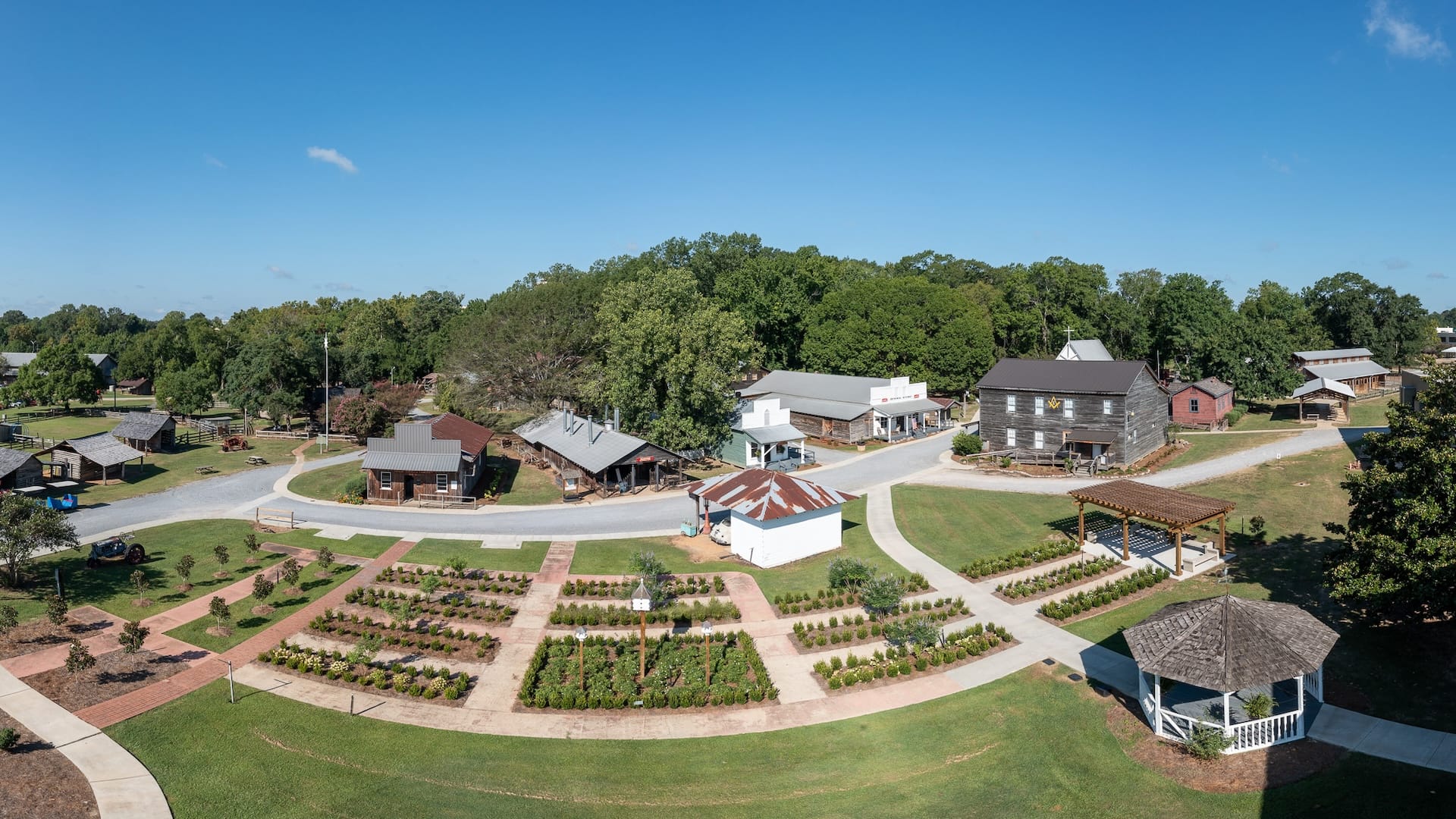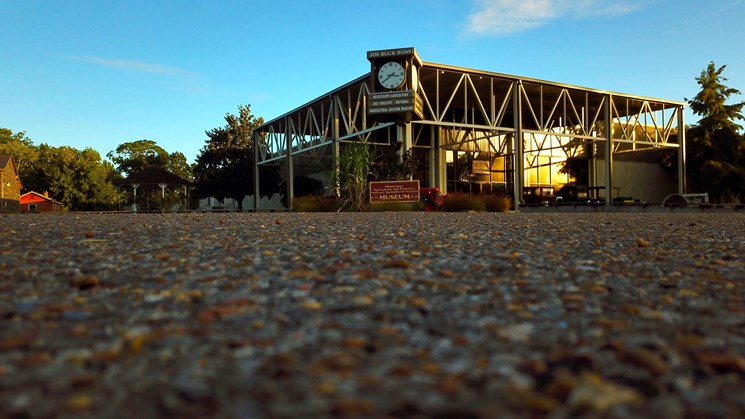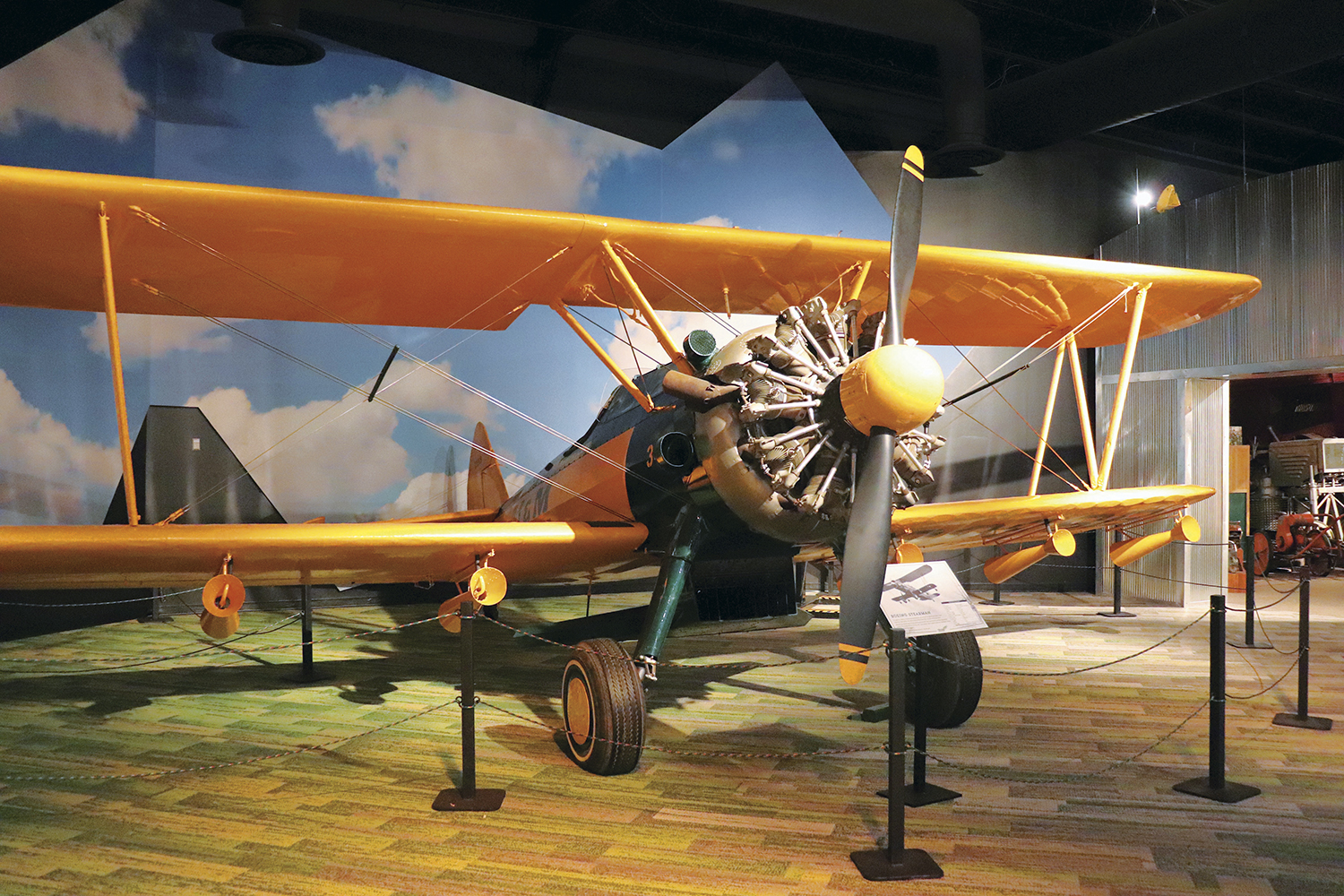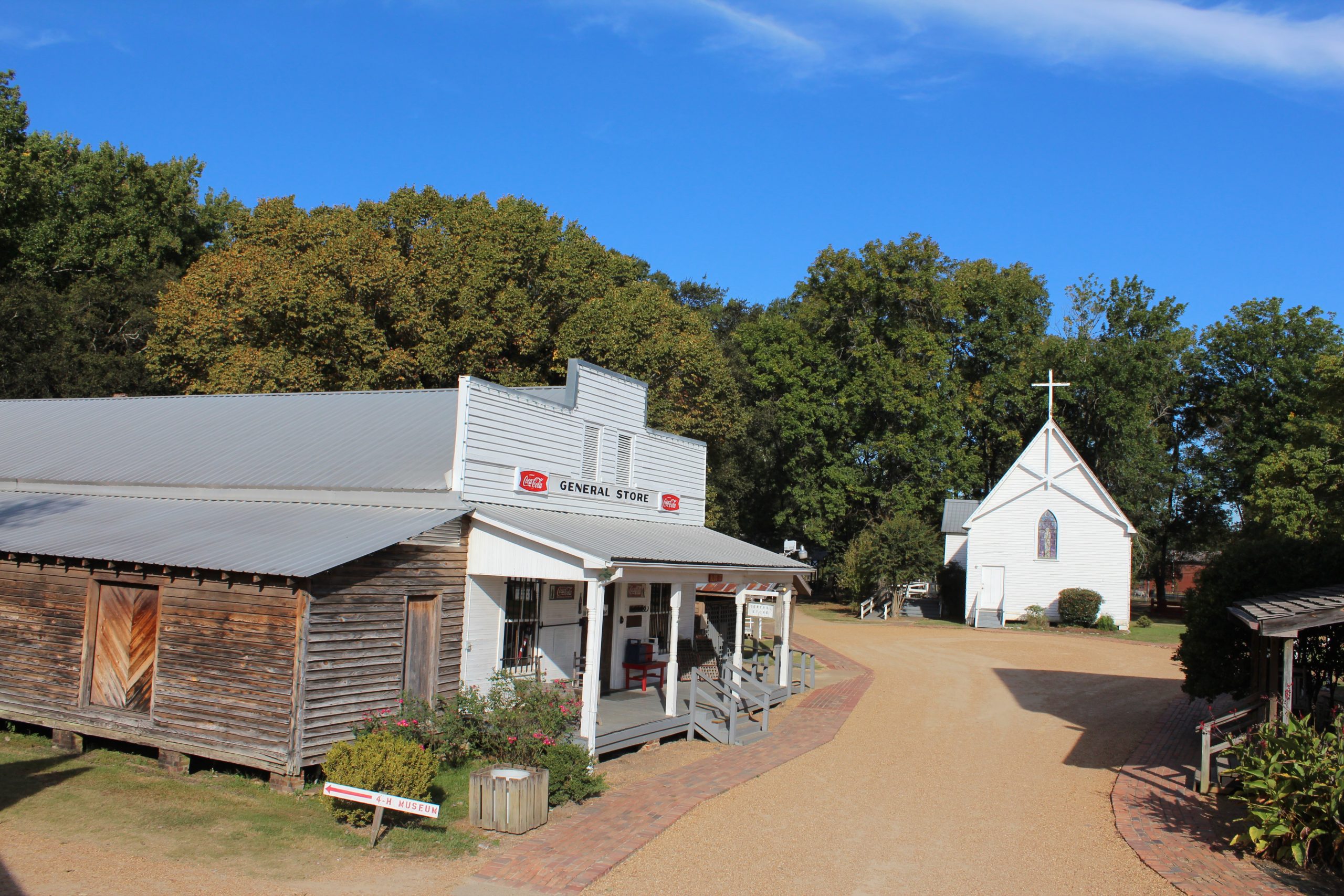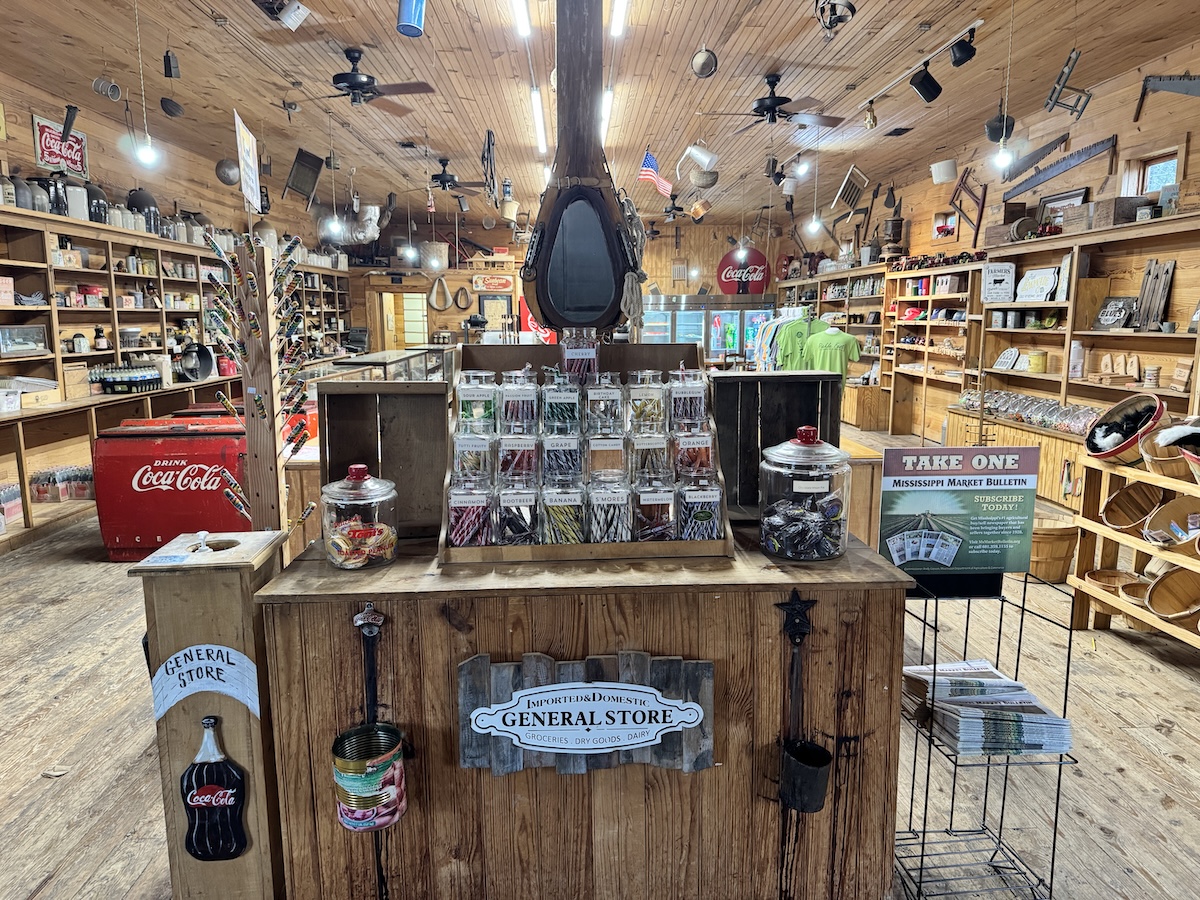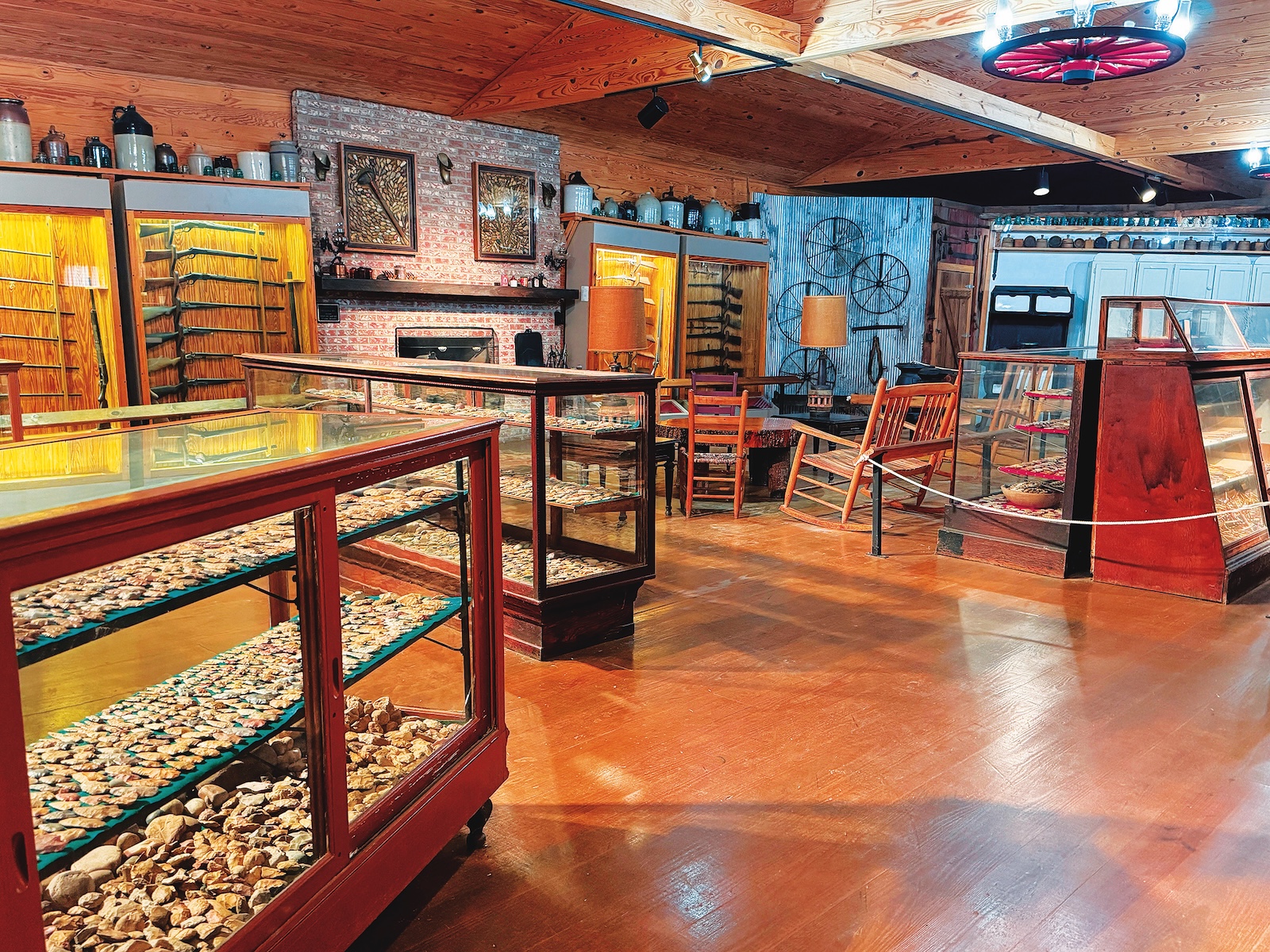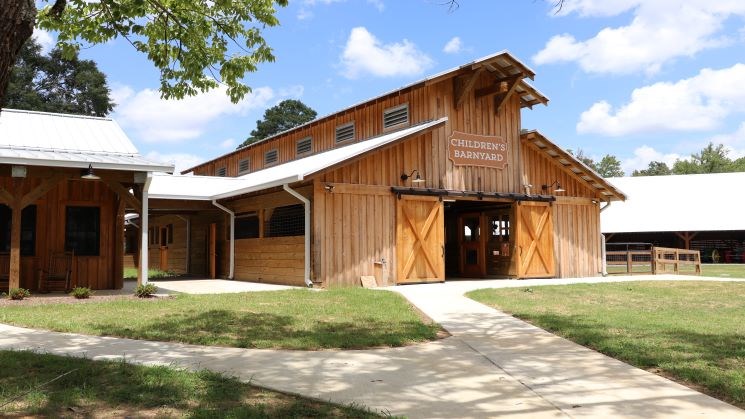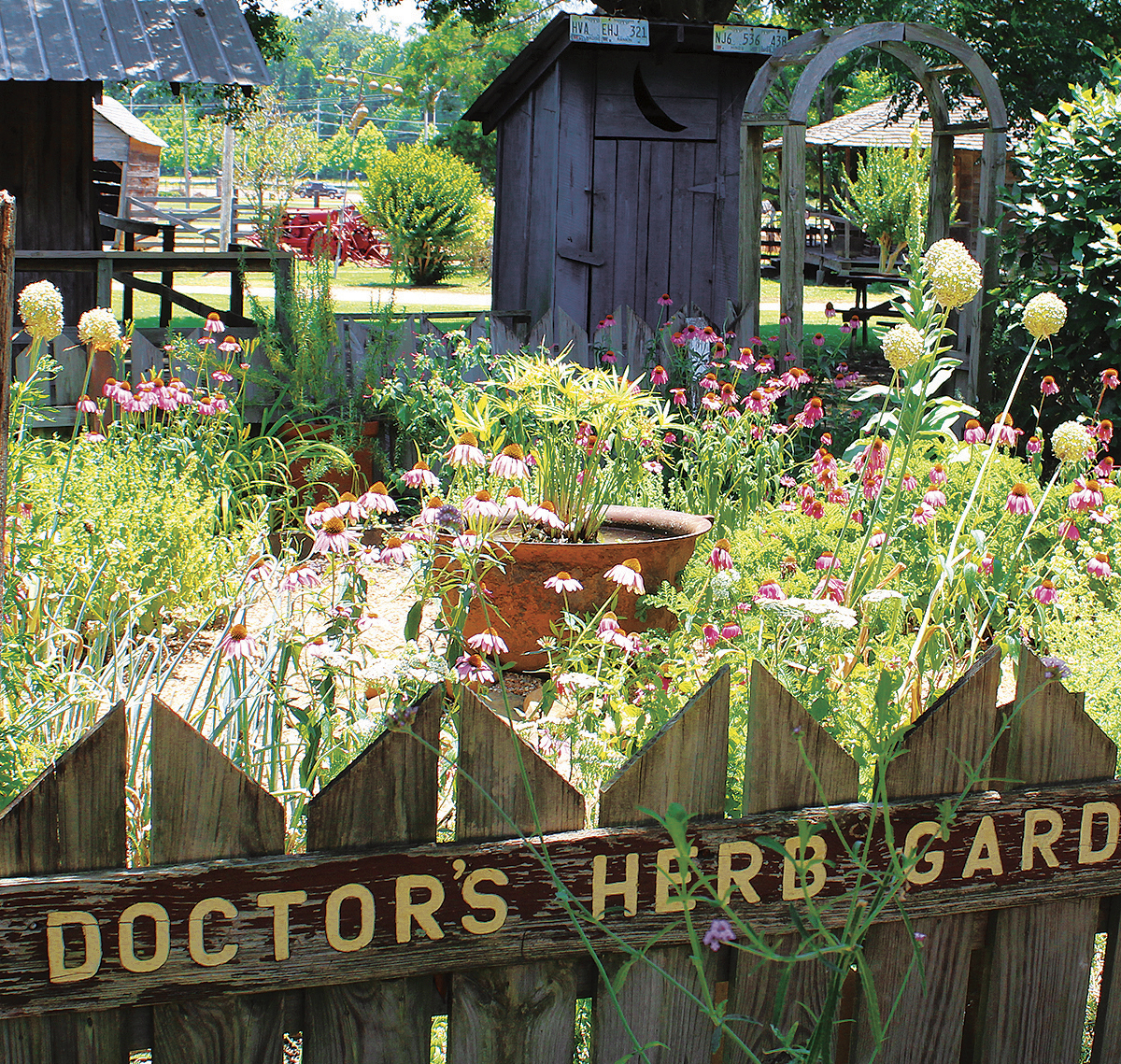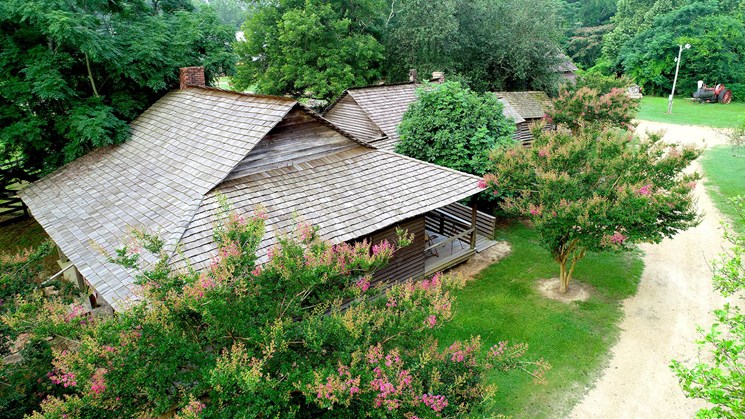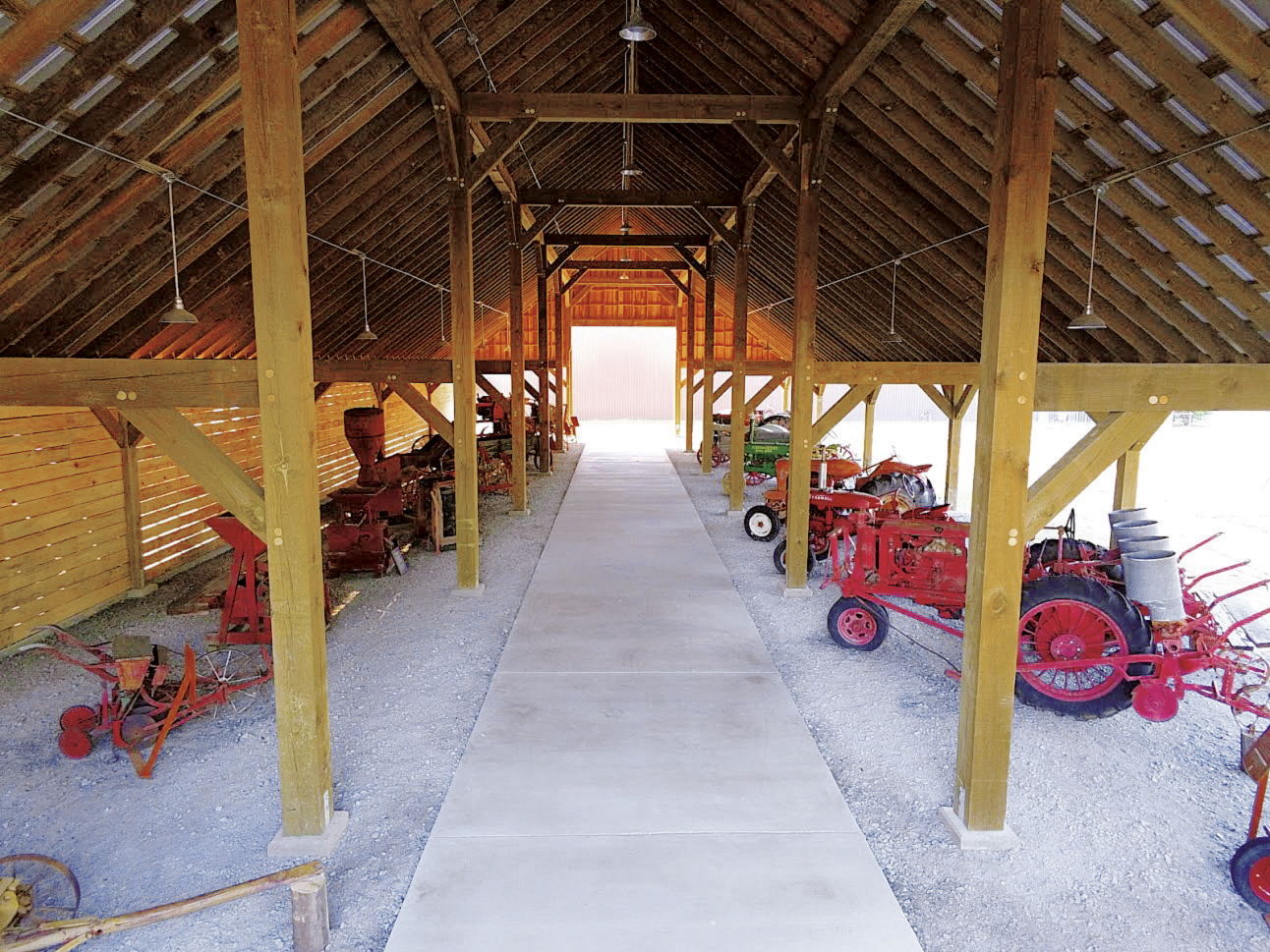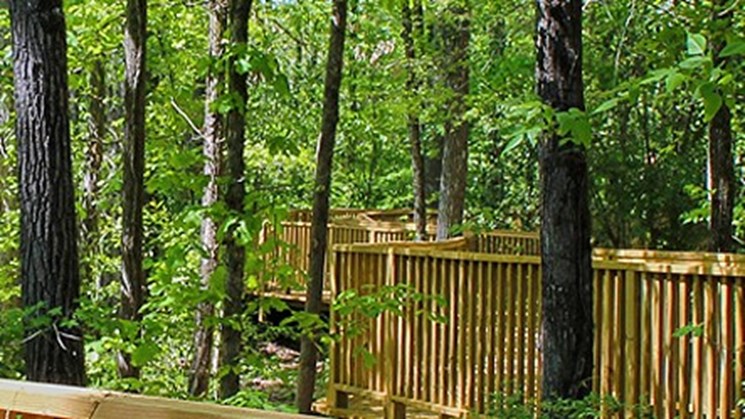Open Monday thru Saturday from 9:00AM - 5:00PM
General Store Hours: 9:00AM - 4:00PM
General Admission (See Events for Special Pricing)
Adults: $8
Children: $6 ages 3-17
Seniors, Military Personnel: $7
Museum
THE MUSEUM
In 1969, Commissioner of Agriculture and Commerce Jim Buck Ross, recognizing a need for the preservation of our culture and heritage in a tangible way, began collecting artifacts, organizing scholars, and laying a ground work for a museum. In 1978, the City of Jackson donated a valuable 39 acre site on Lakeland Drive and Interstate 55. This land could only be used for recreational purposes under specified stipulations of the State of Mississippi, which originally had owned the land. Funds from this appropriation were used to complete the structure itself and another $1.5 million was sought from the private sector by the non-profit Agriculture and Forestry Museum Foundation. The money raised by the foundation was used to construct permanent exhibits, a living history farm, an entire crossroads town, and a forest study area.
Exhibits
Acres of Museum
Annual Events
Heritage Center
The Heritage Center Gallery exhibits 500 years of Mississippi’s agricultural history, from the early contributions to agriculture of the Choctaw population, to turn of the century forest conservation, to modern catfish farming. The Heritage Center hosts three model railroad layouts constructed and operated by the volunteer efforts of the Central Mississippi Model Railroaders Association and the Red Caboose Crew. The layouts represent railroading in the late 1960s and early 1970s when steam locomotives were nearly replaced with modern diesel-electrics using the popular HO and O scale gauges, and span over 200 scale miles!
Locate on Map HERE
National Agricultural Aviation Museum
Covering more than 5,000 square feet, the National Agricultural Aviation Museum’s floor space and airspace provides a comprehensive and fascinating look at an industry that literally reshaped the history of agriculture. On display are actual planes that once flew over Southern farms and plantations complimented by an informative video and a series of colorful photographs and panels.
Locate on Map HERE
Small Town, Mississippi
From the 1820s until recent decades, Mississippi agriculture, and that of much of the South, was centered around the production of cotton. During the antebellum period, cotton was viewed as the social and economic focus of life. The wealth of planters was consumed in the purchase of land, slaves, tariffs, freight costs, and commissions. Little money found its way into Mississippi towns, and by the 1860s, the typical town was little more than a nebulous cluster of mercantile and service establishments.
By the 1920s crossroad towns such as Small Town, Mississippi flourished as a combination of railroads, automobiles, agriculture, forestry and social developments converged. These small towns generally included a general store, filling station, cotton gin, sawmill, blacksmiths shop and grist mill. Professionals such as doctors and journalists began to open offices in many of the towns, most towns had one or more churches, and reforms in education encouraged the construction of schools.
Locate on Map HERE
General Store
The General Store located at the heart of Small Town, Mississippi at the Ag Museum is a replica of the old time general store in the 1920s. Visitors can see displays of items that were for sale during this period, while enjoying an ice-cold Coca-Cola in a glass bottle with candy sticks, old-fashioned rock candy or a moon pie. There is a checker board on the front porch and rocking chairs just across the way that invite you to ‘sit a spell’ and reminiscence about the country store from your childhood.
The Museum General Store also carries a wide assortment of toys including jacks, marbles, yo-yo’s, tops, pick-up sticks, and local Mississippi products including Mississippi Bees Honey, Pennington Farms Honey, Hillside Vineyards Jelly and Jams, Mississippi Cheese Straws.
Locate on Map HERE
Fitzgerald Collection
One of the most enchanting exhibits at the Mississippi Agriculture and Forestry Museum is often overlooked because it is off-the-beaten path behind the Heritage Center. All who make their way down are always glad they came and want to visit again. Everything in the building was once the prized treasure of the Fitzgeralds of Inverness, Mississippi.
Frank Stanley Fitzgerald and his wife, Erva Mae, collected memorabilia of the Mississippi Delta spanning many decades. Soon after their marriage in 1931, they were in an automobile accident that injured Mrs. Fitzgerald and left her confined to a wheelchair. The couple had no children, and what began as a diversion grew into a hobby that expanded into a museum quality collection. The couple spent many weekends browsing antique shops, auctions, and junkyards and stopping at shacks and sheds in the countryside in search of appealing keepsakes.
Locate on Map HERE
Children’s Barnyard
The Children’s Barnyard, which is approximately 2,500 square feet, features 10 stalls, a turnout area, chicken coop, hay loft, tack room and veterinary medicine exhibit. The facility also houses a variety of farm animals such as rabbits, chickens, goats, sheep, cows, mules, pigs and horses.
Locate on Map HERE
Doctors Herb Garden
The Doctor Office Herb Garden has over 200 square feet of beds with 40 different species of medicinal herbs, perennials, tree and shrubs. Since 1991, The Rose Garden has been a permanent place of delight for enthusiasts and visitors alike. Ranging from English to climbers to hybrid teas, the garden has over 60 different rose specimens yields a kaleidoscope of color.
Locate on Map HERE
Fortenberry-Parkman Farmstead
Designated a Mississippi Landmark, this living history exhibit dating back to 1860 includes most of the original buildings moved from Jefferson Davis county, where it was in operation for over 100 years. Behind the Farmstead, visitors can walk through a victory garden.
Locate on Map HERE
Exhibit Barn
The exhibit barn, which has over 5,000 square feet of heavy timber construction exhibit space, features 10 antique tractors and 15 pieces of historical farm equipment. The exhibits inside the barn today depict for visitors how mechanization of agriculture has progressed over the years.
Locate on Map HERE
Nature Trail
The Nature Trail educates visitors on how the environment plays an important role in agriculture and how the environment has always been a friend to the farmer. The purpose of the trail is to allow visitors the opportunity to experience a greater awareness of the unique bond between our agricultural industry and our natural environment.
This trail is a unique experience to those who have never seen a farm or experienced the beauty and harmony of nature to realize the connection between our environment and the industries that give us our food and clothing.
Locate on Map HERE
